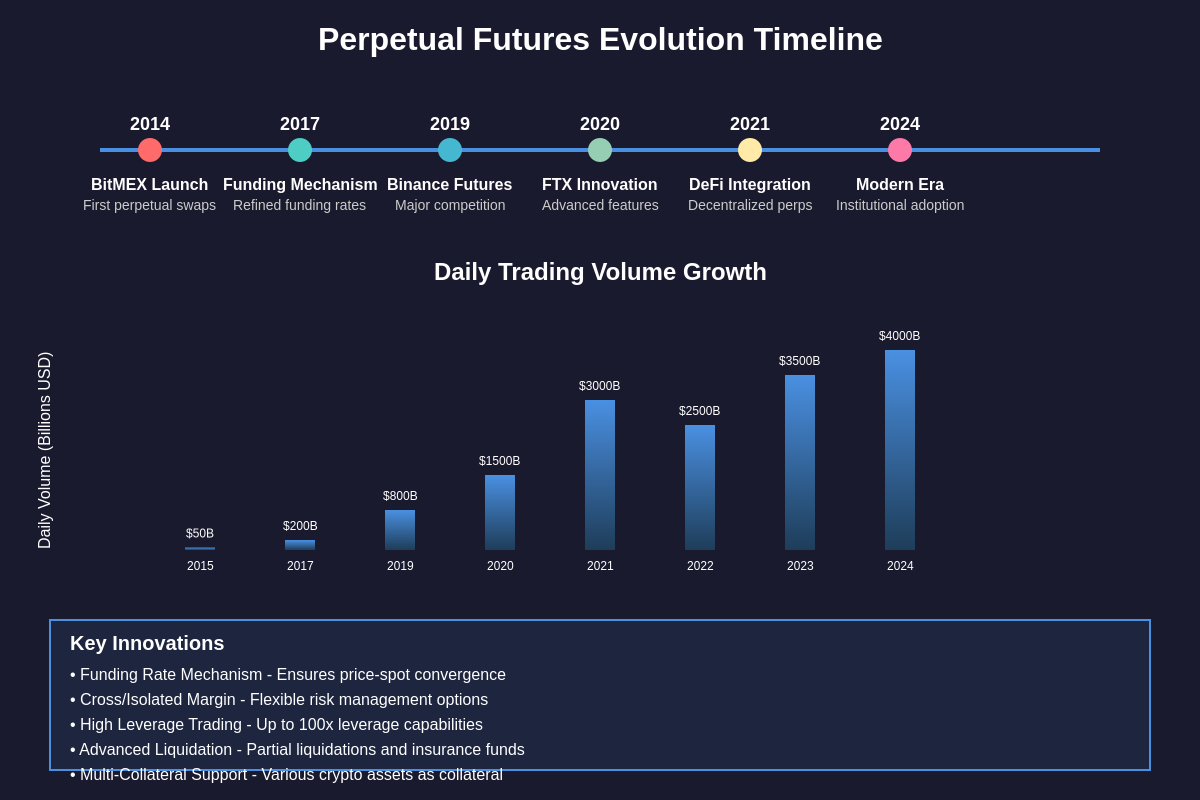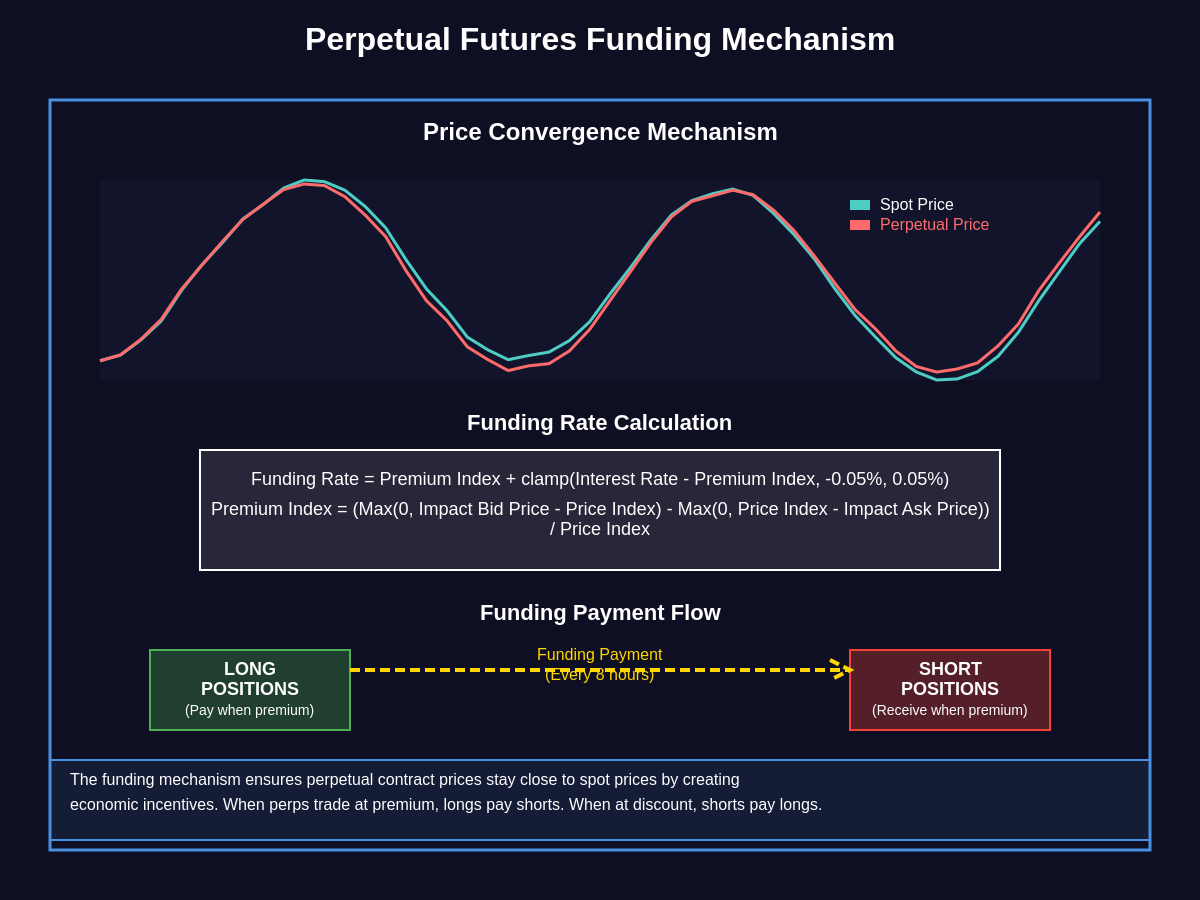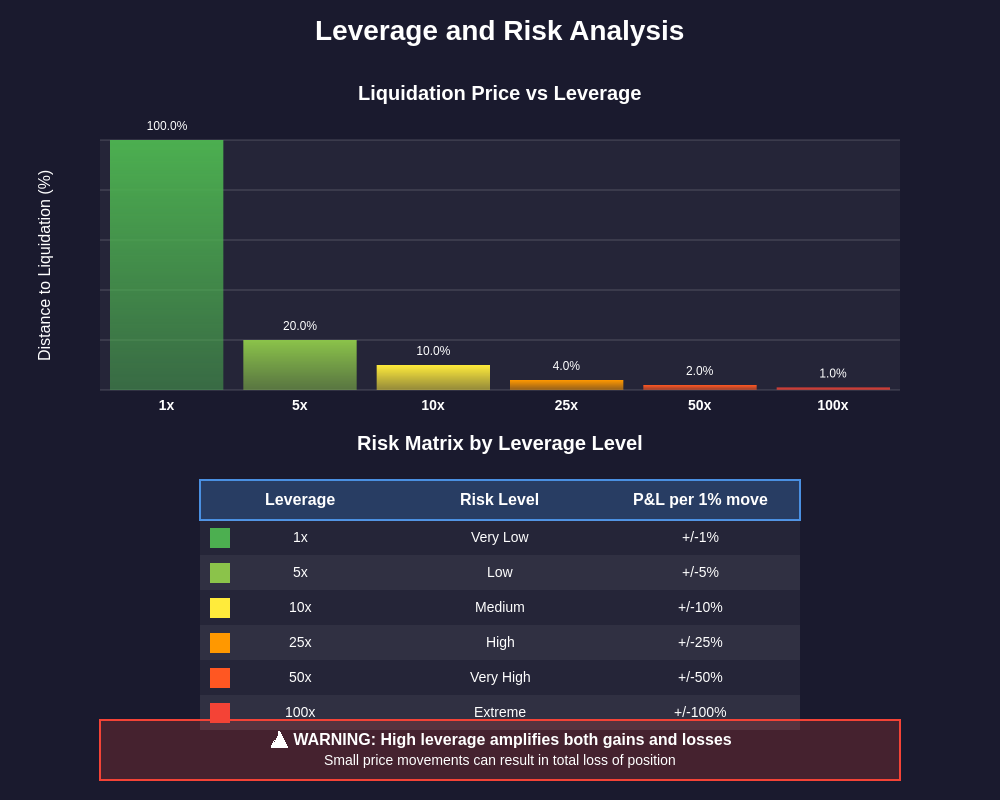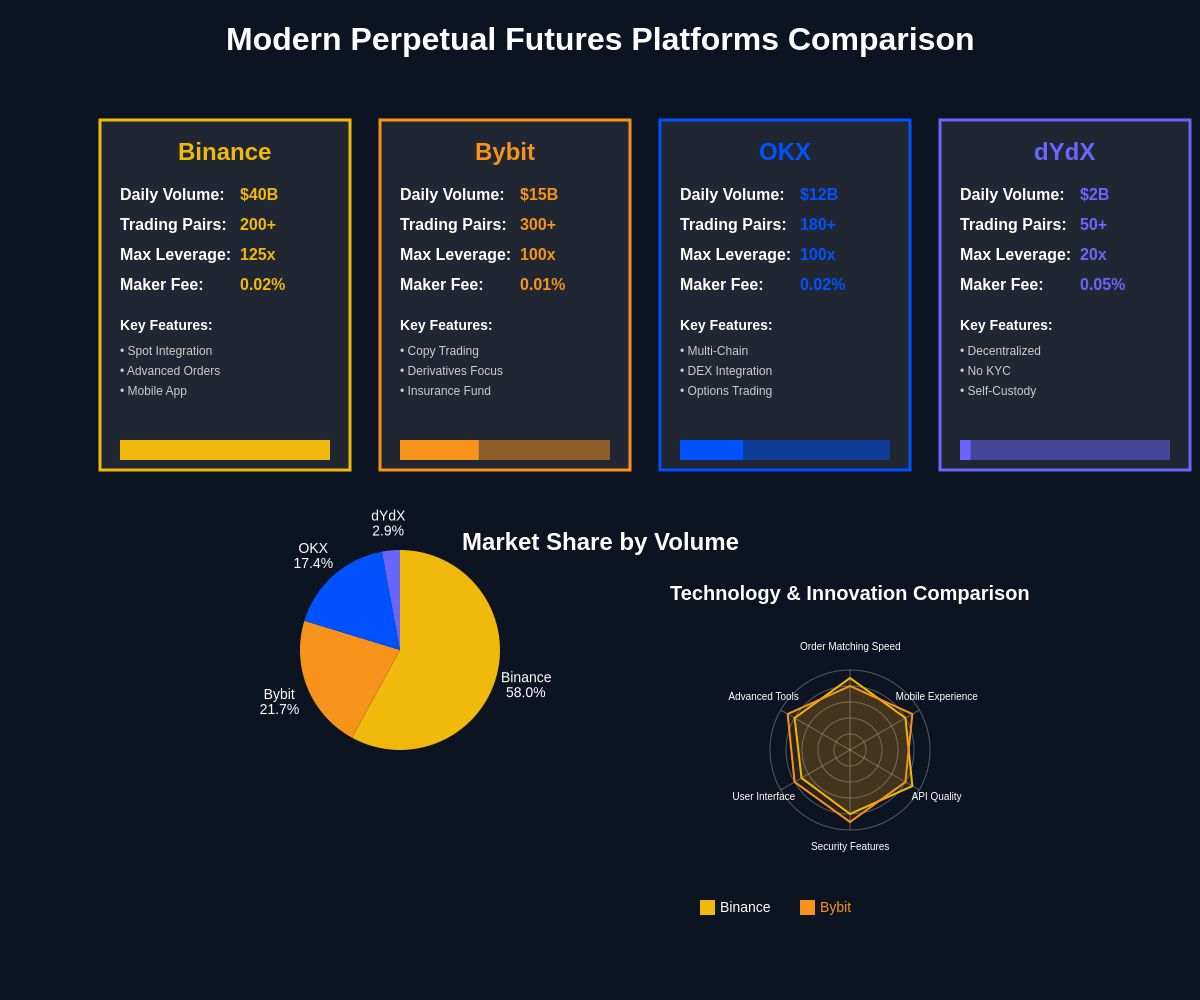The Revolutionary Birth of Crypto Perpetual Futures
The cryptocurrency derivatives market underwent a fundamental transformation with the introduction of perpetual futures contracts, a financial innovation that bridged traditional futures trading with the unique characteristics of digital assets. This evolution began with BitMEX’s groundbreaking platform in 2014, which introduced the concept of perpetual swaps to cryptocurrency trading, creating a new paradigm that would eventually become the dominant form of crypto derivatives trading across the industry.

Unlike traditional futures contracts that have fixed expiration dates, perpetual futures allow traders to maintain positions indefinitely through a sophisticated funding mechanism that ensures contract prices remain anchored to underlying spot prices. This innovation solved several critical problems in cryptocurrency trading, including the complexity of rolling positions, the liquidity fragmentation across different expiration dates, and the need for continuous price discovery in a market that trades twenty-four hours a day, seven days a week.
The early development of perpetual futures was driven by the recognition that cryptocurrency markets required different solutions than traditional financial markets due to their unique characteristics including extreme volatility, continuous trading hours, global accessibility, and the absence of traditional market makers and arbitrageurs who typically ensure price convergence between spot and futures markets.
BitMEX: Pioneering the Perpetual Futures Revolution
BitMEX established itself as the undisputed leader in cryptocurrency derivatives trading by introducing several groundbreaking innovations that would become industry standards across modern perpetual futures platforms. The exchange’s most significant contribution was the development of the funding rate mechanism, a periodic payment system between long and short position holders that ensures perpetual contract prices remain closely aligned with underlying spot market prices without requiring contract expiration or physical settlement.
The funding rate system operates through a sophisticated calculation that considers the premium or discount of the perpetual contract relative to the spot price, creating economic incentives for traders to take positions that help maintain price convergence. When perpetual contracts trade at a premium to spot prices, long position holders pay short position holders, creating an incentive for more short positions and fewer long positions until the premium disappears. Conversely, when perpetual contracts trade at a discount, short position holders pay long position holders, encouraging more long positions and fewer short positions.

BitMEX’s implementation of cross-margin and isolated margin systems provided traders with flexible risk management options that were previously unavailable in cryptocurrency trading. Cross-margin allowed traders to use their entire account balance as collateral for all positions, maximizing capital efficiency but creating higher liquidation risks, while isolated margin enabled traders to limit their risk exposure on individual positions by allocating specific amounts of collateral to each trade.
The platform’s introduction of high leverage trading, offering up to 100x leverage on Bitcoin perpetual swaps, attracted significant trading volume and established BitMEX as the dominant force in cryptocurrency derivatives. This high leverage capability, combined with the platform’s sophisticated liquidation engine and insurance fund mechanism, enabled traders to achieve significant exposure to cryptocurrency price movements with relatively small capital requirements.
BitMEX’s order matching engine and trading infrastructure set new standards for performance and reliability in cryptocurrency derivatives trading, handling peak trading volumes during periods of extreme market volatility while maintaining low latency and high availability. The platform’s innovative approach to position marking, using fair price marking to prevent manipulation-based liquidations, became a standard feature across subsequent derivatives platforms.
Technical Architecture and Innovation Drivers
The technical architecture underlying perpetual futures platforms represents a complex integration of financial engineering, distributed systems design, and risk management frameworks that must operate continuously under extreme market conditions. Modern perpetual futures platforms must handle thousands of transactions per second, maintain accurate position tracking across millions of user accounts, and implement sophisticated risk management systems that prevent cascade liquidations while ensuring market integrity.
The core components of perpetual futures architecture include order matching engines that must process complex order types including market orders, limit orders, stop orders, and various conditional orders while maintaining strict price-time priority and ensuring fair execution across all market participants. These engines must operate with microsecond-level latency requirements while handling the extreme volatility characteristic of cryptocurrency markets.
Position management systems track individual trader positions, calculate margin requirements, monitor liquidation thresholds, and execute automatic position closures when margin requirements are not met. These systems must operate continuously and handle complex scenarios including partial liquidations, cross-margin calculations, and the interaction between multiple positions across different contracts and underlying assets.
Funding rate calculation and distribution systems implement the sophisticated mathematical models that determine periodic payments between long and short position holders, ensuring these payments are calculated accurately and distributed fairly across all position holders. The precision required for these calculations is critical, as small errors can create arbitrage opportunities or unfair advantages for certain traders.
Risk management frameworks encompass insurance funds that absorb losses from positions that cannot be liquidated at favorable prices, circuit breakers that halt trading during extreme market conditions, and position size limits that prevent individual traders from accumulating positions large enough to manipulate market prices or create systemic risks.
Modern platforms also implement sophisticated market data distribution systems that provide real-time price feeds, order book updates, and trade execution information to traders, market makers, and external systems. These systems must handle enormous data volumes while maintaining low latency and high reliability to ensure all market participants have access to accurate, timely market information.
The Competitive Landscape Transformation
The success of BitMEX’s perpetual futures model sparked intense competition across the cryptocurrency derivatives industry, with established exchanges and new entrants developing their own perpetual futures offerings while attempting to differentiate themselves through improved features, lower fees, enhanced security, and broader market coverage. This competitive pressure drove rapid innovation across the industry and led to significant improvements in trading technology, user experience, and market access.
Binance’s entry into perpetual futures trading with Binance Futures represented a significant challenge to BitMEX’s dominance, leveraging the exchange’s enormous spot trading volume and user base to quickly establish a major presence in derivatives trading. Binance’s approach focused on offering competitive fee structures, extensive altcoin perpetual contracts, and tight integration with spot trading activities, creating a comprehensive trading ecosystem that appealed to both institutional and retail traders.
The launch of FTX introduced additional innovations including tokenized stocks, prediction markets, and unique derivative products that expanded the concept of perpetual futures beyond traditional cryptocurrency trading. FTX’s technical architecture emphasized speed, reliability, and advanced order types while offering institutional-grade features including advanced API capabilities, sophisticated risk management tools, and comprehensive reporting systems.
Bybit emerged as another significant competitor by focusing specifically on derivatives trading and implementing features designed to appeal to professional traders including advanced charting tools, comprehensive market analysis capabilities, and sophisticated portfolio management systems. The platform’s emphasis on user experience and customer support helped establish a loyal user base among active derivatives traders.
The emergence of decentralized perpetual futures platforms including dYdX, Perpetual Protocol, and others introduced entirely new models for derivatives trading that operate without centralized intermediaries. These platforms leverage blockchain technology and smart contracts to provide trustless trading environments while implementing novel approaches to funding rates, liquidations, and risk management that differ significantly from centralized platforms.
Regulatory Evolution and Compliance Challenges
The regulatory landscape surrounding perpetual futures trading has evolved dramatically since the early days of BitMEX’s dominance, with regulatory authorities worldwide developing increasingly sophisticated frameworks for overseeing cryptocurrency derivatives trading while balancing the need for investor protection with the desire to foster innovation in financial technology.
The United States Commodity Futures Trading Commission’s actions against BitMEX in 2020 marked a watershed moment in the regulation of cryptocurrency derivatives, establishing important precedents regarding the application of traditional derivatives regulations to cryptocurrency trading platforms. These actions clarified that cryptocurrency derivatives platforms serving US customers must comply with CFTC registration requirements, implement know-your-customer procedures, and maintain adequate risk management and surveillance systems.
European regulatory developments including the Markets in Crypto-Assets Regulation have created comprehensive frameworks for cryptocurrency derivatives trading that establish clear requirements for platform authorization, risk management, market surveillance, and customer protection. These regulations have influenced platform design and operational procedures across European markets while serving as models for regulatory development in other jurisdictions.
Asian regulatory approaches have varied significantly across different jurisdictions, with some countries embracing cryptocurrency derivatives trading through comprehensive regulatory frameworks while others have implemented restrictive policies that limit or prohibit such activities. These divergent approaches have created a complex regulatory landscape that perpetual futures platforms must navigate while serving global customer bases.
The compliance requirements imposed by these various regulatory frameworks have significantly increased the operational complexity and costs associated with operating perpetual futures platforms. Modern platforms must implement sophisticated compliance systems including transaction monitoring, suspicious activity reporting, customer verification procedures, and comprehensive record-keeping systems that meet the requirements of multiple jurisdictions simultaneously.
Risk Management and Liquidation Mechanisms
Risk management systems in perpetual futures trading have evolved into sophisticated frameworks that must balance the competing objectives of maximizing capital efficiency, minimizing liquidation risks, preventing market manipulation, and maintaining overall market stability. These systems represent some of the most advanced applications of financial risk management technology, incorporating real-time risk monitoring, predictive analytics, and automated intervention mechanisms that operate continuously across global markets.

Liquidation mechanisms have become increasingly sophisticated as platforms have learned from early liquidation cascades that caused significant market disruption and trader losses. Modern liquidation systems implement partial liquidation procedures that close only the minimum portion of a position necessary to meet margin requirements, reducing the market impact of individual liquidations while preserving as much of the trader’s position as possible.
The development of insurance funds represents another critical evolution in risk management, with platforms maintaining pools of capital specifically designed to absorb losses from positions that cannot be liquidated at favorable prices. These insurance funds are typically funded through a portion of trading fees and liquidation fees, creating a sustainable mechanism for socializing losses that cannot be attributed to individual traders.
Advanced risk management systems now incorporate machine learning algorithms that can identify potential liquidation cascades before they occur, enabling platforms to implement preventive measures including position size limits, increased margin requirements, or temporary trading halts that prevent systemic risks from materializing. These predictive systems analyze patterns in position distributions, funding rates, market volatility, and external market conditions to identify scenarios that could trigger widespread liquidations.
Modern platforms also implement sophisticated mark price calculations that use composite indices based on multiple spot exchanges to prevent manipulation-based liquidations while ensuring accurate position valuations. These mark price systems are critical for maintaining fair liquidation procedures and preventing traders from being liquidated due to temporary price spikes or manipulation attempts on individual exchanges.
Technological Infrastructure and Scalability Solutions
The technological infrastructure requirements for modern perpetual futures platforms have grown exponentially as trading volumes have increased and user expectations for performance, reliability, and feature sophistication have risen. Today’s platforms must handle peak trading volumes that exceed those of major traditional derivatives exchanges while maintaining low latency, high availability, and comprehensive functionality across web, mobile, and API interfaces.
Order matching engine technology has evolved to handle complex order types, sophisticated risk management procedures, and high-frequency trading requirements while maintaining strict fairness and transparency standards. Modern engines implement advanced algorithms for order prioritization, partial fill handling, and market impact minimization that ensure optimal execution quality for all market participants regardless of order size or trading frequency.
Database architecture and data management systems must handle enormous volumes of trading data, position information, and historical records while providing real-time access for trading operations, risk management, and regulatory reporting. These systems implement sophisticated partitioning, replication, and backup procedures that ensure data integrity and availability even during hardware failures or extreme market conditions.
Network infrastructure and content delivery systems ensure that trading platforms remain accessible to users worldwide with consistent performance characteristics regardless of geographic location or local network conditions. Modern platforms implement multiple data centers, redundant network connections, and sophisticated traffic management systems that can handle sudden traffic spikes during major market events.
Security infrastructure has become increasingly critical as perpetual futures platforms have become attractive targets for sophisticated cyber attacks. Modern platforms implement comprehensive security frameworks including multi-factor authentication, hardware security modules, cold storage systems, and advanced threat detection systems that protect both platform operations and user funds from various attack vectors.
Market Structure and Liquidity Provision
The market structure surrounding perpetual futures trading has evolved into a complex ecosystem involving various types of market participants including retail traders, institutional investors, algorithmic trading firms, market makers, and arbitrageurs who collectively provide the liquidity and price discovery mechanisms that enable efficient derivatives trading.

Professional market makers have become essential participants in perpetual futures markets, providing continuous bid and offer prices across multiple contracts while managing inventory risks and profiting from bid-ask spreads. These market makers typically employ sophisticated algorithmic trading systems that can quickly adjust prices in response to market conditions while maintaining competitive spreads that attract trading volume.
Algorithmic trading and high-frequency trading have become increasingly prominent in perpetual futures markets, with sophisticated trading firms employing advanced strategies including statistical arbitrage, momentum trading, and cross-market arbitrage that help maintain price efficiency across different trading venues and underlying assets. These algorithmic strategies contribute significant trading volume and help ensure that pricing inefficiencies are quickly corrected.
The relationship between perpetual futures markets and underlying spot markets has become increasingly sophisticated, with arbitrageurs continuously monitoring price relationships and executing trades that ensure perpetual contract prices remain closely aligned with spot prices. This arbitrage activity is facilitated by the funding rate mechanism and creates economic incentives that maintain price convergence without requiring active intervention by exchange operators.
Institutional participation in perpetual futures markets has grown significantly as traditional financial institutions have developed cryptocurrency trading capabilities and regulatory frameworks have provided clearer guidance regarding institutional participation in cryptocurrency derivatives. This institutional involvement has brought additional liquidity, more sophisticated trading strategies, and increased market stability to perpetual futures trading.
Innovation in Contract Design and Features
Contract design innovation has been a major driver of growth and differentiation in the perpetual futures industry, with platforms continuously developing new contract types, underlying assets, and trading features that expand the scope and appeal of derivatives trading. These innovations have expanded perpetual futures trading beyond Bitcoin to encompass hundreds of different cryptocurrencies, tokenized assets, and novel financial instruments.
The introduction of coin-margined perpetual contracts alongside traditional USDT-margined contracts provided traders with additional flexibility in managing currency exposure and collateral requirements. Coin-margined contracts allow traders to use the underlying cryptocurrency as collateral, eliminating the need to hold stablecoins while providing natural hedging characteristics for traders who hold significant positions in specific cryptocurrencies.
Multi-collateral systems have enabled traders to use various cryptocurrencies as collateral for their trading positions, providing increased capital efficiency and reducing the friction associated with managing multiple token balances across different contracts. These systems implement sophisticated risk management procedures that account for the volatility and correlation characteristics of different collateral assets.
The development of prediction markets and event-based contracts has expanded perpetual futures concepts to include trading on political events, sports outcomes, and other non-financial events. These contracts use similar technical infrastructure and risk management systems while providing exposure to entirely different types of underlying events and outcomes.
Cross-margin portfolio systems allow traders to manage risk across multiple positions and contracts simultaneously, enabling more sophisticated trading strategies while improving capital efficiency. These systems calculate margin requirements across entire portfolios rather than individual positions, allowing profitable positions to offset losses on other positions and reducing overall margin requirements.
User Experience and Accessibility Improvements
User experience design has become a critical competitive factor in the perpetual futures industry as platforms compete to attract and retain traders across different experience levels and trading styles. Modern platforms implement sophisticated user interface designs that balance advanced functionality with intuitive usability while accommodating the needs of both novice and professional traders.
Mobile trading applications have evolved to provide comprehensive derivatives trading functionality that rivals desktop platforms while optimizing for the unique characteristics of mobile devices including touch interfaces, smaller screens, and varying network conditions. These applications implement sophisticated notification systems, simplified order entry procedures, and streamlined portfolio management tools that enable effective derivatives trading from mobile devices.
Educational resources and trading tutorials have become standard features across perpetual futures platforms as operators recognize the importance of trader education in building sustainable user bases and reducing support requirements. These educational programs cover topics ranging from basic derivatives concepts to advanced trading strategies while providing practical guidance on platform-specific features and risk management procedures.
Customer support systems have evolved to handle the complex technical and financial questions that arise in derivatives trading while providing timely responses across multiple communication channels. Modern platforms implement comprehensive knowledge bases, automated chatbot systems, and escalation procedures that ensure traders can quickly resolve issues and receive appropriate guidance for their trading activities.
Paper trading and simulation environments allow new traders to learn derivatives trading concepts and practice trading strategies without risking real capital. These simulation systems provide realistic trading experiences using actual market data while implementing educational features that help traders understand the mechanics of perpetual futures trading and develop effective risk management practices.
Institutional Adoption and Infrastructure Development
The institutional adoption of cryptocurrency perpetual futures has driven significant infrastructure development as traditional financial institutions require sophisticated risk management, reporting, and connectivity capabilities that meet institutional standards for derivatives trading. This institutional demand has pushed perpetual futures platforms to implement advanced features including comprehensive API capabilities, institutional-grade security measures, and integration with traditional financial infrastructure.
Prime brokerage services have emerged as major platforms develop capabilities to serve institutional clients who require sophisticated credit arrangements, enhanced liquidity access, and comprehensive risk management services. These prime brokerage offerings typically include features such as portfolio margining, enhanced credit facilities, and consolidated reporting across multiple trading venues.
Custody and settlement infrastructure has evolved to meet institutional requirements for asset protection and operational efficiency while maintaining the speed and flexibility characteristics that make perpetual futures attractive to institutional traders. Modern platforms implement segregated custody arrangements, comprehensive audit procedures, and integration with institutional custody providers that meet regulatory and operational requirements.
Trading infrastructure and connectivity options have been enhanced to support the sophisticated trading systems employed by institutional participants including low-latency market data feeds, high-performance order entry systems, and comprehensive historical data access that enables backtesting and strategy development. These infrastructure improvements benefit all market participants by improving overall market quality and reducing transaction costs.
Regulatory reporting and compliance capabilities have been developed to meet the increasing requirements imposed by regulatory authorities worldwide while providing institutional participants with the documentation and reporting capabilities they require for their own compliance and risk management procedures.
Emerging Technologies and Future Directions
The perpetual futures industry continues to evolve rapidly with emerging technologies including blockchain integration, decentralized finance protocols, and advanced analytics capabilities that promise to further transform derivatives trading in the cryptocurrency space. These technological developments are creating new possibilities for contract design, risk management, and market access while addressing some of the limitations of current centralized platforms.
Decentralized perpetual futures protocols represent one of the most significant technological developments, using smart contracts and blockchain technology to create trustless derivatives trading environments that operate without centralized intermediaries. These protocols implement novel approaches to funding rates, liquidations, and risk management while providing users with enhanced transparency and reduced counterparty risk.
Cross-chain integration capabilities are enabling perpetual futures trading across multiple blockchain networks, allowing traders to use assets from different blockchains as collateral while maintaining unified risk management and position tracking. These cross-chain capabilities expand the range of assets available for derivatives trading while reducing the friction associated with managing positions across multiple blockchain networks.
Artificial intelligence and machine learning applications are being integrated into various aspects of perpetual futures trading including risk management, market making, fraud detection, and customer service. These AI applications can analyze vast amounts of trading data to identify patterns, predict market movements, and optimize trading strategies while providing personalized recommendations and risk alerts to individual traders.
Layer 2 scaling solutions and other blockchain scalability improvements are addressing the performance limitations that have historically prevented widespread adoption of decentralized derivatives trading. These scaling solutions can provide the throughput and latency characteristics required for professional derivatives trading while maintaining the transparency and decentralization benefits of blockchain-based systems.
Global Market Impact and Economic Implications
The growth of perpetual futures trading has had profound implications for global cryptocurrency markets, creating new mechanisms for price discovery, risk management, and capital allocation while influencing the behavior of various market participants and the overall structure of cryptocurrency financial markets.
Price discovery mechanisms in cryptocurrency markets have been significantly enhanced by the liquidity and trading activity in perpetual futures markets, with derivatives prices often leading spot market movements and providing important information about market sentiment and expectations. This enhanced price discovery contributes to more efficient capital allocation and improved market stability across the broader cryptocurrency ecosystem.
Risk management capabilities provided by perpetual futures enable a broader range of participants to engage with cryptocurrency markets by providing tools for hedging price exposure, managing portfolio risk, and accessing leveraged exposure without the complexity of traditional futures contracts. These risk management capabilities have been particularly important for institutional adoption of cryptocurrency investments.
Capital efficiency improvements resulting from perpetual futures trading allow market participants to achieve desired exposure levels with smaller capital commitments while providing enhanced flexibility for portfolio construction and risk management. This improved capital efficiency has contributed to increased trading volumes and broader market participation across cryptocurrency markets.
Market integration between cryptocurrency derivatives and traditional financial markets continues to evolve as perpetual futures platforms develop products and services that bridge these markets while regulatory frameworks provide clearer guidance regarding institutional participation in cryptocurrency derivatives trading.
The economic impact of perpetual futures extends beyond direct trading activities to include effects on market volatility, correlation structures, and the development of sophisticated trading strategies that influence price dynamics across related markets and asset classes.
Conclusion and Industry Outlook
The evolution of perpetual futures from BitMEX’s pioneering implementation to today’s sophisticated multi-platform ecosystem represents one of the most significant financial innovations in the cryptocurrency industry, creating new possibilities for trading, risk management, and capital allocation while establishing cryptocurrency derivatives as a major component of global financial markets.
The technical innovations developed for perpetual futures trading have advanced the state of the art in derivatives trading technology while creating infrastructure and capabilities that benefit the broader cryptocurrency ecosystem. These innovations continue to drive competition and improvement across the industry while expanding access to sophisticated financial tools for traders worldwide.
Regulatory developments worldwide are creating clearer frameworks for perpetual futures trading while establishing important protections for market participants and promoting market integrity. These regulatory developments are essential for continued institutional adoption while ensuring that perpetual futures markets can continue to grow and evolve in a sustainable manner.
The future of perpetual futures trading will likely be shaped by continued technological innovation, regulatory evolution, and the integration of traditional financial markets with cryptocurrency derivatives. Emerging technologies including decentralized finance protocols, cross-chain integration, and artificial intelligence applications promise to create new possibilities for derivatives trading while addressing current limitations and expanding market access.
As the cryptocurrency industry continues to mature, perpetual futures trading will remain a critical component of the financial infrastructure supporting digital asset markets while continuing to evolve in response to changing market needs, technological capabilities, and regulatory requirements. The lessons learned from the evolution from BitMEX to modern platforms provide valuable insights into the factors that drive innovation and adoption in financial technology while highlighting the importance of continuous improvement in serving the needs of diverse market participants.
Disclaimer: This article is for informational purposes only and does not constitute financial advice. Cryptocurrency derivatives trading involves significant risk and may not be suitable for all investors. Past performance does not guarantee future results. Please conduct your own research and consult with qualified financial advisors before making investment decisions.